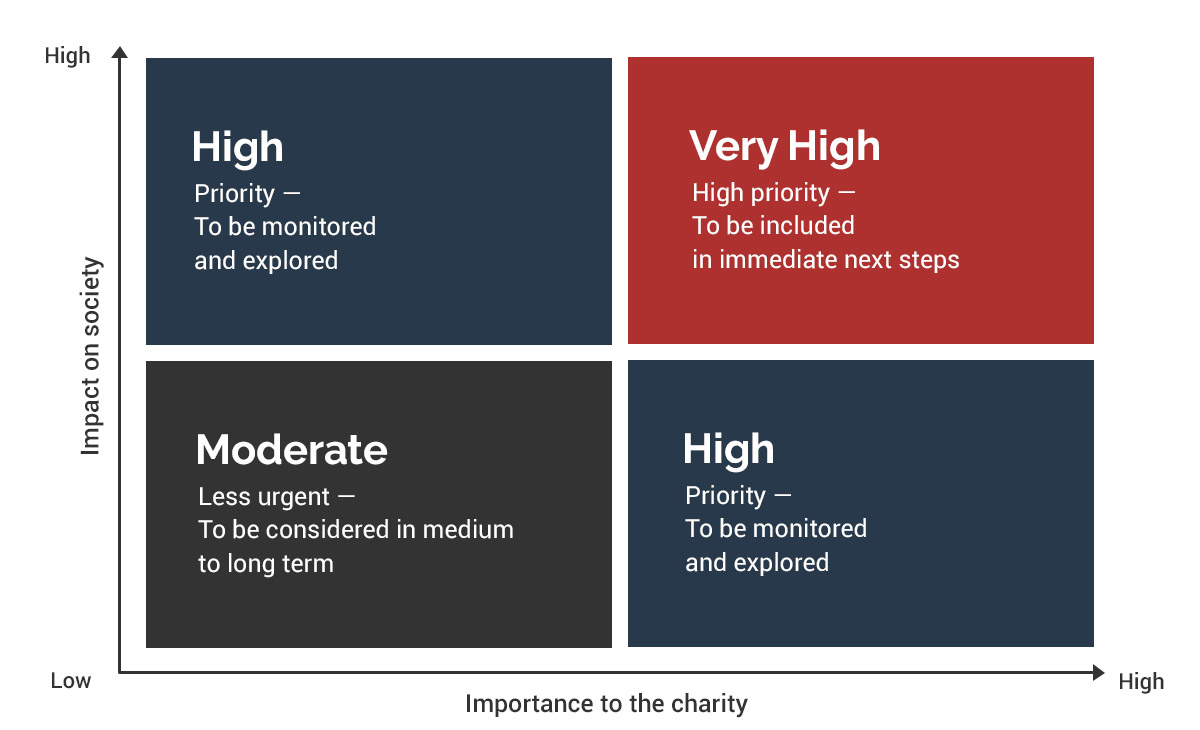Implementing Environmental, Social, and Governance (ESG) initiatives is a pivotal step for charities and Institutions of a Public Character (IPC) looking to transform awareness into meaningful action. By embedding ESG into their operations, charities can align their values with actionable strategies that resonate with stakeholders and enhance their societal contributions.
However, starting on the process can be daunting for charities with no prior experience in doing so. This blog, the first of a 2-part series, aims to simplify the implementation process by breaking down the different aspects that charities can start with to help them better navigate their journey.
It will touch on several methodologies, such as establishing a governance structure, delegating roles and responsibilities, and more, before sharing how our ESG service can help. Ultimately, we aim to furnish charities with essential information to guide their way.
Integrating ESG into Charity Board Agenda
Charity boards must recognise that sustainability is a critical component of its long-term success. It needs to be included in its core strategies and board agenda.
Charities may also need to assess their governance structures, especially sustainability-related decision-making processes, to bolster their ESG implementation.
Related Read: Driving Sustainable Change Through ESG for Charities and IPCs in Singapore
Establishing a Governance Structure
Setting Up an ESG Sub-committee
Strong governance structure is vital to ensuring governance efficiency. Charities can modify their current governance structure to incorporate ESG governance and supervision. Since every charity is different, we recognise that there is no one-size-fits-all method.
An ESG sub-committee can be established to define charities’ ESG strategy and oversee related initiatives. This sub-committee should encompass management- and board-level members. This is because management is key to oversee the final delivery and practices of ESG.
Determine Core Roles in the Governance Structure
The size of the ESG sub-committee and preferred number of members required to ensure sufficient supervision, management, and implementation of ESG initiatives must be considered.
Members of the sub-committee should perform different roles across service lines and functions to make sure that ESG is successfully implemented throughout the organisation.
Delegating Responsibilities for Overseeing and Managing ESG
Roles and Responsibilities
A set of Terms of Reference is recommended to define and outline these aspects of the ESG sub-committee clearly:
- Purpose and Objectives
- Structure
- Reporting
- Goals
- Roles and Responsibilities
An ESG learning and development plan should be defined to enable the sub-committee and employees to have relevant knowledge and skills to implement and run ESG initiatives effectively. The methodology and guidelines for incorporating considerations of the charity’s impact into present decision-making processes should also be defined.
Decision-Making
Decision-making authority within the ESG sub-committee should be appointed, as well as establishing formal decision-making processes. Boards should be made accountable for and should spearhead the charity’s transformation campaign. ESG metrics can be incorporated when evaluating members’ performance and incentives.
Initiating Systems and Procedures
A sub-committee charter that has its mission, goals, structures, and procedures should be established. Communication mediums and regular meetings with the charity board and management should be established.
Integrating ESG into the Enterprise Risk Management (ERM) Framework
Although the concept of ESG is a new area of focus for charities, it can be integrated into their existing frameworks and processes instead of starting from ground up. This will also help charities create practical steps to achieve their goals alongside effective monitoring and reporting.
The table below shows how the ESG framework can integrate into the ERM framework:
| ERM Component | ESG Consideration |
|---|---|
| Risk Governance |
|
| Risk Strategy and Appetite |
|
| Risk Assessment and Measurement |
|
| Risk Culture |
|
| Risk Management and Monitoring |
|
| Risk Reporting and Insights |
|
| Technology and Data |
|
Defining ESG Strategy
Having a well-defined ESG strategy can support charities in reaching the ESG goals. They are encouraged to create an ESG strategy that is meticulously planned and consulted to review their present ESG status, define future ambitions, and determine the required actions to take.
These key steps can be considered when creating the strategy:
| Step | What it Means |
|---|---|
| Step 1: Identifying Core ESG Topics |
|
| Step 2: Assessing Present State and Exploring Possible Initiatives |
|
| Step 3: Establishing the Level of Ambition |
|
Identifying Core ESG Topics
Charities should determine ESG topics that are most important to them and their stakeholders by reviewing internal operations and having discussions with stakeholders. Engaging with stakeholders using different methods on various ESG issues can help charities better prioritise and align their efforts with the concerns of the groups they serve.
The stakeholder engagement process can happen over a few stages, which are:
- Stakeholder Identification
- Identification of Possible ESG Issues
- Stakeholder Engagement
- Prioritisation of ESG Issues
An assessment matrix may be useful to prioritise ESG topics, with an example being:

Assessing Present State and Exploring Possible Initiatives
Following that, charities should review their current ESG status and establish clear objectives. This review can enable charities to measure their current ESG performance and determine present ESG performance and identify required actions to achieve their desired future state.
After the core ESG topics are identified, charities can then proceed to create and plan initiatives to boost progress. This includes organising and carrying out specific actions and programmes.
Establishing the Level of Ambition
After the identification of core ESG topics, understanding the current state and looking into different initiatives to drive progress, charities should assess their ESG ambition levels.
Some key considerations include knowing who the key stakeholders are, whether the charity has the resources and capabilities required to achieve their goals, and the ESG topics that are of immediate priority.
Some examples of ESG goals and initiatives that charities can have are:
| Environmental Goals | Social Goals | Governance Goals |
|---|---|---|
| The commitment to resource conservation | The commitment to community engagement | The commitment to data protection |
| Reducing carbon footprint | The dedication to socially responsible business | The commitment to board diversity |
| Forging green partnerships with suppliers and partners | Encouraging employee well-being | The dedication to ethical fundraising |
How Can InCorp Help Charities Implement ESG?
Adopting ESG principles offers charities and Institutions of a Public Character (IPC) an opportunity to drive meaningful change, both within their organisations and for the communities they serve. By committing to sustainability, social impact, and robust governance practices, these organisations can build stronger trust with stakeholders and ensure their long-term resilience.
Together, through collaboration and shared purpose, charities and IPCs can lead the way in creating a more equitable and sustainable future for all. When embarking on the process, working with a reliable partner can help charities navigate ESG implementation with greater ease.
Our ESG experts at InCorp can assist in these areas:
- ESG Policy
- ESG Committee Terms of Reference
- Enterprise Risk Management
- Stakeholder Engagement
- Materiality Assessment
- ESG Strategy
Contact our team to find out more today!
FAQs about Charities and IPCs in Singapore
What is the ESG framework for non-profits?
- Charities and IPCs in Singapore are guided by the revised Code of Governance for Charities and IPCs (2023).
What are some examples of ESG implementation for charities?
- Examples include volunteer development, promoting diversity and inclusion, and committing to transparency and accountability.
Is philanthropy part of ESG?
- Yes, philanthropy is highlighted as a key component of how charities and non-profits can manage their relationships with stakeholders and contribute to societal well-being.



